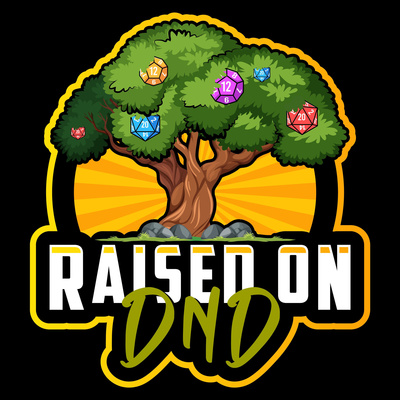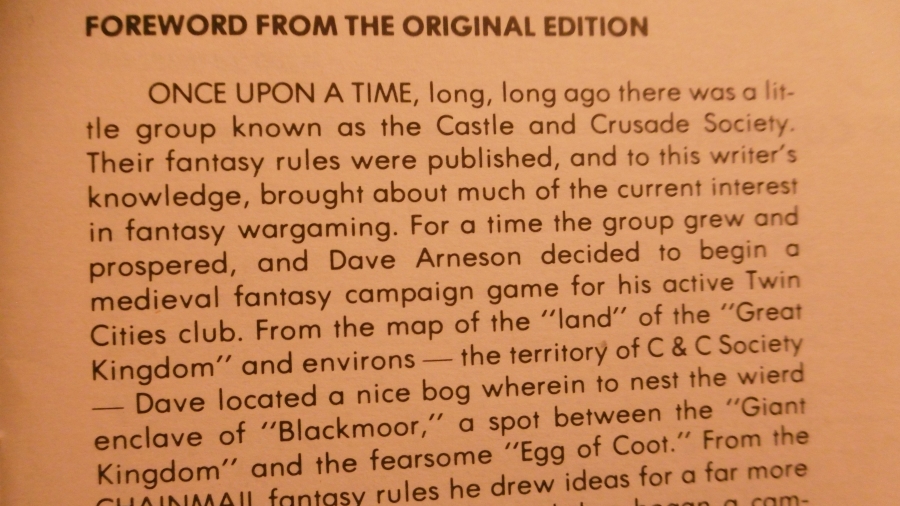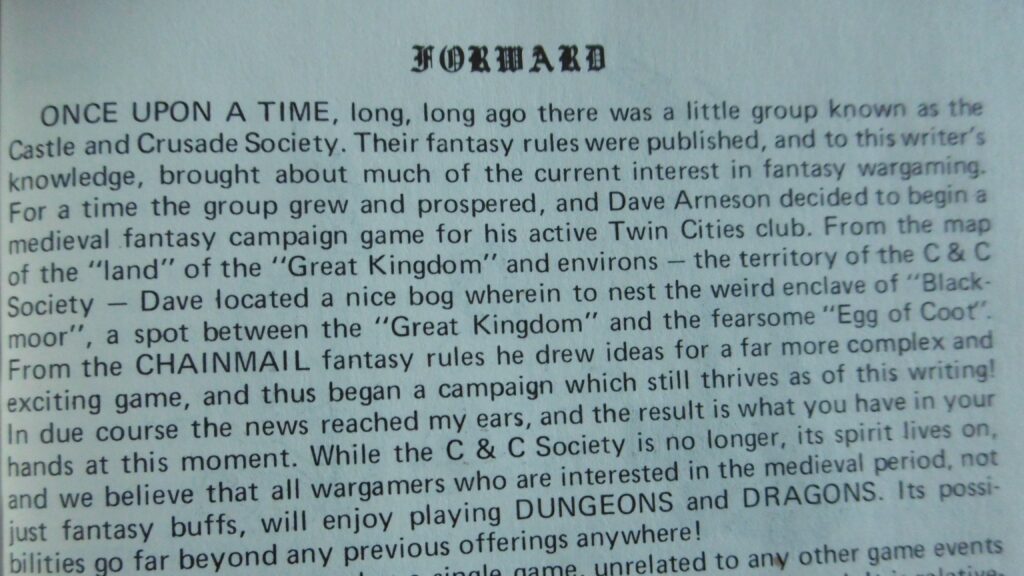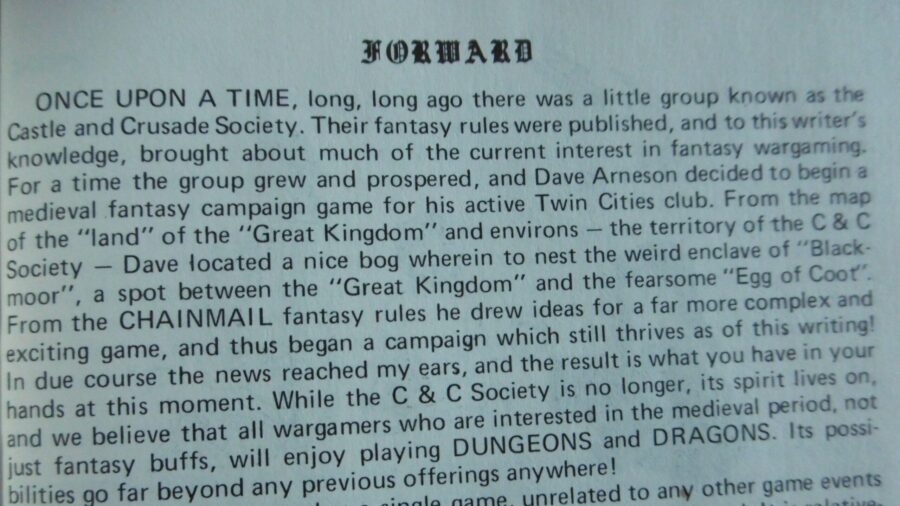Movement, Encumbrance, Carrying Capacities, and Resting
Another curiosity in Holmes is the player character move rates. The Movement Table (9) shows that an “unencumbered, unarmored man” explores the dungeon at 240 feet per ten-minute turn, a fully armored man at 120. This corresponds to OD&D, wherein “Two moves constitute a [ten-minute] turn” and, so, a fully armored character moves 120 feet in a turn (The Underworld and Wilderness Adventures, 8).
A discrepancy arises, though, when we consider monster move rates. Man-sized creatures move from 60 feet to 120 feet per turn. An orc, for example, has an armor class of 7 (leather armor) and moves at 90 feet per turn. Inserting a line between unarmored and fully armored characters for “half armor” on Holmes’s table (as does Phenster), a leather-armored character would move at 180 feet per turn or twice as fast as the orc.
As written, the rules leave no room for ambiguity. Each monster entry is explicit: “Move: 90 feet/turn,” to use the orc example.
Another Charming Solution
In “Weapon Damage and Attack Priority,” concerning the dagger problem, I note:
By far the simplest solution is to ignore Holmes’s varying number of attacks per round by weapon. Thus, every weapon strikes once per round and does d6 damage. Weapon choice then becomes purely aesthetic.
Here again is an opportunity to modify the rules with a light hand. Though it veers away from later editions, by doubling Holmes’s monster move rates, we align Bluebook Basic with OD&D.
In “Movement and Encumbrance” (L’avant garde #63), Phenster gives weight-allowance ranges then admits to estimating encumbrance. I give Movement Rates [H] to align character move rates with those of monsters, which includes estimated encumbrance, and Encumbrance [E] as the more detailed option. Further, I separate extra and super heavy loads into another rule in the [P] Pandemonium category. Phenster adds carrying capacities for haversacks and pouches, which I put in the [E] Extra category.
On resting, Holmes stipulates that “one turn every hour should be spent motionless” (9), as does OD&D (The Underworld and Wilderness Adventures, 8), without exacting any penalties should the players ignore the requirement, which we often did. Phenster adds consequences. Resting [E] is informed by Chainmail (11).
Movement Rates [H]
A character’s movement rate is limited by armor worn and treasure carried according to the table below. The movement type depends on the situation, explained after the table. Units are feet per turn unless otherwise shown in the header. The max weight column is given for use with Encumbrance [E].
Note: “Normal” rate refers to the normal move speed in the dungeon (see table).
| Dungeon | Outdoors | |||||||
|---|---|---|---|---|---|---|---|---|
| Category | Armor | Max Weight (cn) | Combat (round) | Exploring | Normal | Town* (yards) | Wilderness* (yards) | Journey (miles/day) |
| Unencumbered | None | 300 | 20 | 120 | 240 | 400 | 240 | 24 |
| Half armor | Leather | 600 | 15 | 90 | 180 | 300 | 180 | 18 |
| Full armor | Chain, plate | 900 | 10 | 60 | 120 | 200 | 120 | 12 |
| Heavy load** | 1800 | 5 | 30 | 60 | 100 | 60 | 6 | |
| * Assumes good lighting; halve the rate in poor lighting. ** Cannot run. | ||||||||
Dungeon
Normal: Moving in cramped, dim spaces is hazardous even without the threat of monster attack or unseen pitfalls. Characters may move at normal rate over familiar terrain. Still, they are surprised on a 1 to 3 and may not notice any changes since their last passage. Other move rates are derived from the normal speed.
Exploring: Wary of lurking monsters and on the lookout for hidden treasure, a character moves at half normal rate while exploring.
Combat: In a 10-second combat round, a creature can move and normally defend itself while moving 1⁄6 the distance it can explore in one turn.
Faster Movement
Phenster shows a running rate of twice normal speed for dungeon environments and adds the option to run during combat outside melee. I add running outdoors up to three times the move rate. I also add forced march for long-distance overland travel.
At any movement rate, except exploring and journey, creatures can double or treble their speed within limits defined below. In the dungeon, running is twice or thrice normal move rate (not the exploring rate). Moving faster than the given rate, a creature is surprised on a roll of 1 to 4.
Double time: An unencumbered character can double-time for 3 turns. A half-armored character for 2 turns. Fully-armored 1 turn. A character burdened with a heavy load cannot run.
Sprint: Sprinting is three times the current rate. Flank attacks on a sprinting character are made as if to the rear (see Flank and Rear Attacks [E]), gaining a +2 bonus on the attack roll. After sprinting one round, fully-armored characters cannot run (sprint or double-time) the next round.
Forced march: Traveling overland, characters may move half again their journey rate for one day. They must rest the next day or be fatigued (see Resting [E], below).
Notes on Running
- According to my reading, Phenster inflicts no penalty to a double-timing character in combat. Assuming one hustles in such a dire situation, we are aligned with combat move rates in B/X.
- A charge is executed at sprint speed (see Charge [E]). Therefore, a charging character is likewise more vulnerable to flank attacks.
Outdoors
Wilderness and journey rates are considered the base move, which is further modified by terrain type. We’ll get to that later.
Town: Characters can move through non-threatening, well-lit, open spaces ten times faster than in dungeons, assuming they are not making a map either. In poor lighting conditions, the rate is halved.
Wilderness: Exploring a dangerous but open environment, characters move at three times the normal dungeon rate. The wilderness rate is expressed in yards per turn. Again, halve the rate in poor lighting conditions.
Journey: Overland travel is 11 times faster than the normal move rate in the dungeon. The journey rate can be derived from the normal dungeon move rate divided by 10 in miles per day.
Heavy Loads [P]
Phenster’s table breaks heavy loads into three weight ranges. Characters so encumbered cannot run, and those with extra and super heavy loads take penalties in combat and cannot travel long distances. All that adds a certain realism but is over complex for the Holmes spirit, so I separate this rule from Movement Rates [H].
| Dungeon | Outdoors | |||||||
|---|---|---|---|---|---|---|---|---|
| Category | Armor | Max Weight (cn) | Combat (round) | Exploring | Normal | Town* (yards) | Wilderness* (yards) | Journey (miles/day) |
| Unencumbered | None | 300 | 20 | 120 | 240 | 400 | 240 | 24 |
| Half armor | Leather | 600 | 15 | 90 | 180 | 300 | 180 | 18 |
| Full armor | Chain, plate | 900 | 10 | 60 | 120 | 200 | 120 | 12 |
| Heavy load** | 1200 | 5 | 30 | 60 | 100 | 60 | 6 | |
| Extra-heavy**† | 1500 | 3 | 20 | 40 | 60 | 40 | — | |
| Super-heavy**‡ | 1800 | 1 | 10 | 20 | 30 | 20 | — | |
| * Assumes good lighting; halve the rate in poor lighting. ** Cannot run. † −2 penalty on attack rolls, +2 penalty to AC. ‡ −4 attack rolls, +4 AC. | ||||||||
Encumbrance [E]
Encumbrance is measured by an item’s category according to the following table. Only armor, weapons, and treasure are considered. All other items are counted in the standard allowance, which is 100 coins. Weapons by weight are given in the Damage Dice by Weapon Class Table in “Weapon Damage and Attack Priority.”
| Equipment | Encumbrance (in coins) |
|---|---|
| Leather armor | 300 |
| Chain, plate armor | 600 |
| Shield | 100 |
| Light weapons | 20 |
| Normal weapons | 50 |
| Heavy weapons | 100 |
| Extra-heavy weapons | 150 |
| Coin, gem, scroll, ring | 1 |
| Jewelry, potion, scroll w/case | 10 |
| Wand, staff, rod | 30 |
| Standard allowance | 100 |
Strength adjustment: A character can carry 200 additional coins for every +1 bonus for strength or 100 fewer coins for every −1. (See “Ability Score Modifiers in the Great Halls of Pandemonium.”)
Carrying Capacities [E]
These are the carrying capacities of common containers.
| Container | Capacity (in coins) |
|---|---|
| Large sack | 600 |
| Backpack | 300 |
| Small sack | 300 |
| Haversack | 200 |
| Pouch | 100/50/25* |
| * Large/medium/small | |
Resting [E]
Characters must rest for one turn after exploring for five turns, running, or combat. The number of turns a character can run without resting depends on their encumbrance (above).
Characters who do not rest suffer a −1 penalty on attack and damage rolls and move at the next slower category. Hirelings check morale at −1 on the dice (see Morale [E]). For every five more turns exploring or any running or combat, the penalties increase by 1 and the move rate goes down another step. Unencumbered characters moving slower than their move rate don’t need to rest.
This is the 30th in a continuing series of articles, which reedits house rules for Holmes Basic D&D from 40-year-old game club newsletters. Mentions of house rules are in bold text and followed by a [bracketed category designator].
For rules category descriptions and more about the newsletters, see “About the Reedition of Phenster’s.” For an index of articles, see Coming Up in “Pandemonium Society House Rules.”
Phenster’s Pandemonium Society House Rules is a work of fiction. Names, characters, businesses, events, incidents, and newsletters are either products of the author’s imagination or are used in a fictitious manner. Any resemblance to actual persons, living or dead, or actual events is pure coincidence.

The 1977 edition of Gygax and Arneson’s DUNGEONS & DRAGONS is also known as “Holmes Basic” after editor Dr. J. Eric Holmes.




